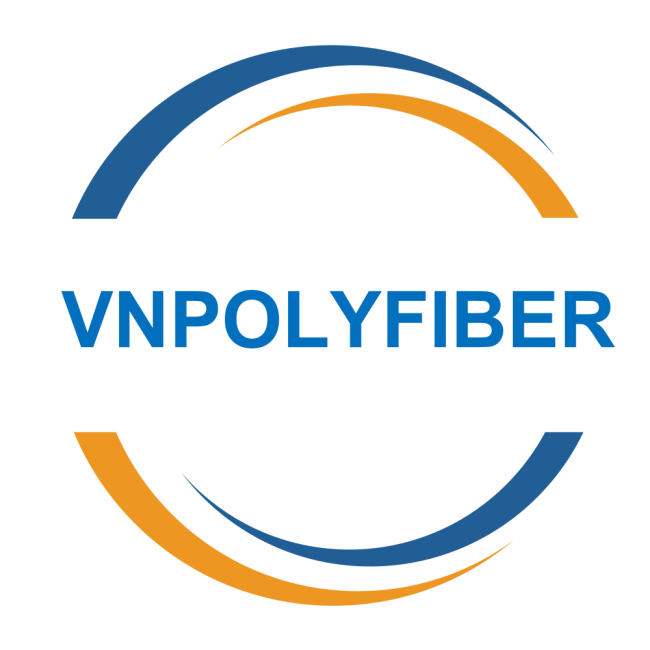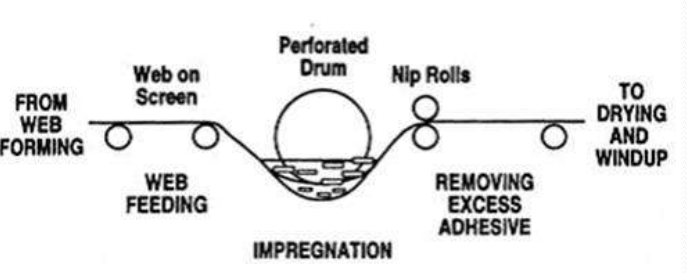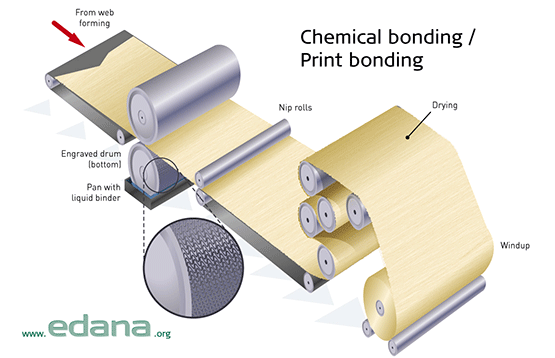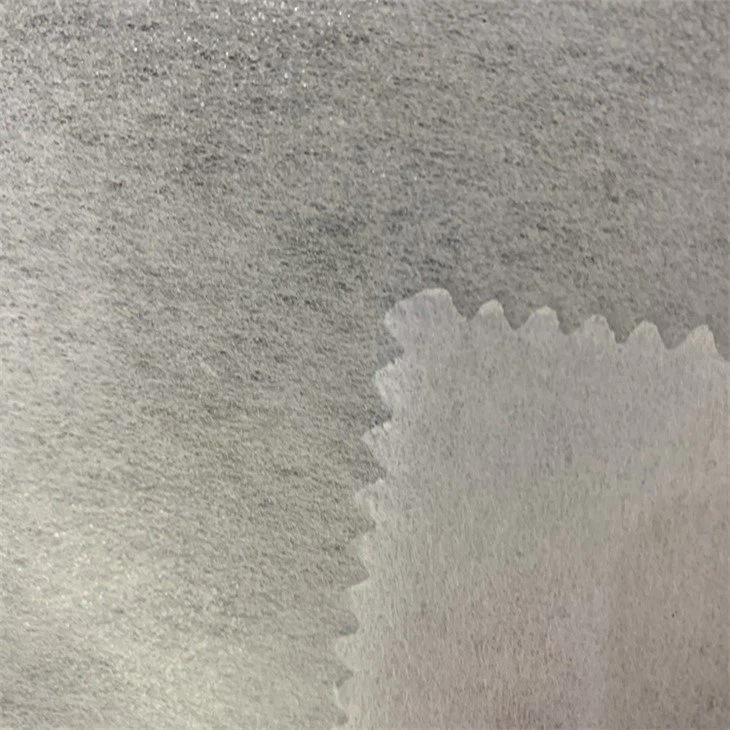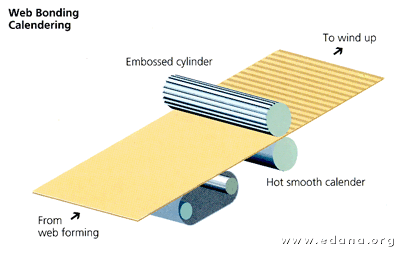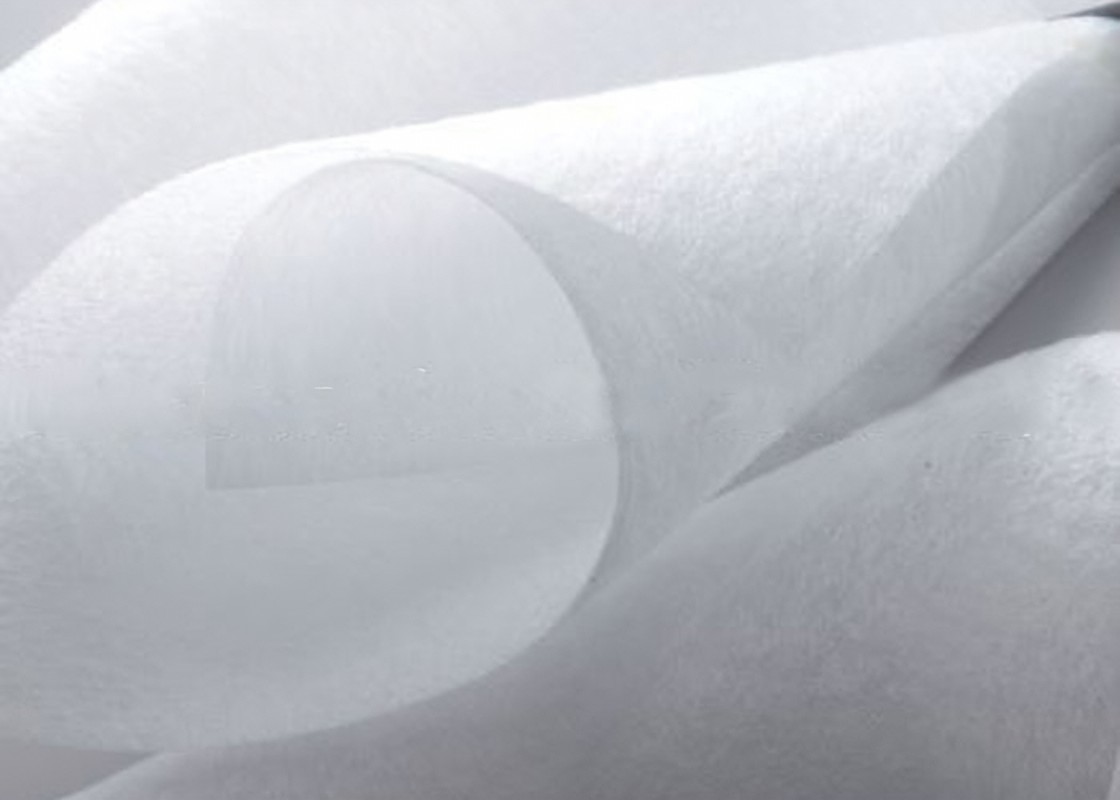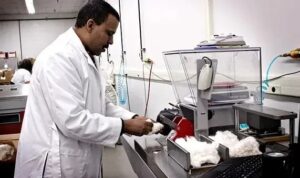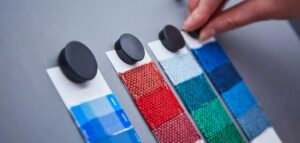What is Chemical bonding nonwoven?
Chemical bonding nonwoven, also known as chemically bonded nonwoven, is a type of fabric made by binding fibers together using chemical binders. This process involves applying a bonding agent to a fiber web, which then holds the fibers in place, creating a cohesive fabric. Here’s a detailed look at chemically bonded nonwoven fabrics:
Production Process
- Fiber Selection:
- Types of Fibers: Both natural fibers (e.g., cotton, wood pulp) and synthetic fibers (e.g., polyester, polypropylene, rayon) are used.
- Blending: Fibers are often blended to achieve desired properties such as softness, strength, and absorbency.
- Web Formation:
- Carding: Fibers are opened, aligned, and layered into a web using carding machines.
- Air Laying: Fibers are dispersed into an air stream and then collected on a moving belt to form a uniform web.
- Wet Laying: Fibers are suspended in a liquid medium and then deposited onto a screen to form a web.
- Binder Application:
- Spraying: The chemical binder is sprayed onto the fiber web.
- Padding: The web is passed through a bath containing the binder solution.
- Foam Application: The binder is applied as foam, ensuring uniform distribution.
- Bonding:
- Drying and Curing: The web with the applied binder is passed through an oven where heat activates the binder, causing it to bond the fibers together.
- Cooling: The bonded fabric is cooled and then wound onto rolls.
Characteristics of Chemically Bonded Nonwovens
- Strength: The chemical binder provides strength and durability to the fabric.
- Uniformity: The application of binders ensures a uniform bond, leading to consistent fabric properties.
- Versatility: Different binders and application methods can be used to tailor the fabric’s properties to specific applications.
- Cost-Effectiveness: The process is relatively simple and can be cost-effective for high-volume production.
- Customization: The use of various binders allows for customization of the fabric’s characteristics, such as softness, stiffness, absorbency, and water repellency.
Applications of Chemically Bonded Nonwovens
- Hygiene Products:
- Diapers: Provides absorbency and structural integrity.
- Sanitary Napkins: Used in the absorbent core and backsheet for their liquid retention and comfort.
- Wipes:
- Disposable Wipes: Used for cleaning and personal care due to their absorbency and strength.
- Industrial Wipes: Suitable for heavy-duty cleaning tasks.
- Medical Products:
- Surgical Gowns and Drapes: Provides barrier properties and strength.
- Face Masks: Used in layers to add structure and filtration efficiency.
- Filtration:
- Air and Liquid Filters: Provides support and filtration efficiency in industrial and domestic filtration systems.
- Interlinings and Clothing:
- Interlinings: Used in garments to add structure and support.
- Disposable Clothing: Suitable for protective clothing in medical and industrial environments.
- Household Products:
- Tablecloths and Napkins: Provides durability and absorbency in disposable tableware.
- Dust Covers: Used for protecting furniture and equipment.
Advantages of Chemically Bonded Nonwovens
- High Strength: The chemical bonds provide good tensile strength and durability.
- Customizable Properties: Various binders can be used to impart specific properties such as water repellency, softness, and flame retardancy.
- Uniformity: The application of binders ensures a consistent and uniform fabric structure.
- Cost-Effective: Efficient for high-volume production with relatively low costs.
Disadvantages of Chemically Bonded Nonwovens
- Environmental Concerns: The use of chemical binders can raise environmental and health concerns if not managed properly.
- Limited Breathability: Depending on the binder used, the fabric may have limited breathability, making it less suitable for certain applications.
- Potential for Binder Migration: In some cases, binders may migrate within the fabric, affecting its performance and appearance.
Key Considerations
- Binder Selection: The type of binder used is crucial in determining the final properties of the fabric. Common binders include latex, acrylics, and polyvinyl acetate.
- Application Method: The method of applying the binder (spraying, padding, foam) impacts the uniformity and penetration of the binder within the fabric.
- End-Use Requirements: The specific application will dictate the choice of fibers, binders, and processing conditions to achieve desired properties such as absorbency, strength, and flexibility.
Chemically bonded nonwovens are versatile and widely used fabrics known for their strength, durability, and customizable properties. They are integral in various industries, from hygiene and medical products to filtration and household goods, offering a balance of performance and cost-effectiveness.
What is Thermal bonding nonwoven?
Thermal bonding is a process used to create nonwoven fabrics by using heat to bond fibers together. This method relies on thermoplastic fibers that melt when exposed to heat and then solidify upon cooling, thereby bonding the fibers at their contact points. Thermal bonding produces strong, durable, and lightweight nonwoven fabrics with a variety of applications. Here’s a detailed look at thermal bonding nonwoven fabrics:
Production Process
- Fiber Selection:
- Thermoplastic Fibers: Commonly used fibers include polypropylene, polyethylene, polyester, and bicomponent fibers (fibers with a core of one polymer and a sheath of another polymer with a lower melting point).
- Blending: Fibers can be blended to achieve specific properties like strength, softness, and thermal resistance.
- Web Formation:
- Carding: Fibers are opened, aligned, and layered into a web using carding machines.
- Air Laying: Fibers are dispersed in an air stream and deposited onto a moving conveyor belt to form a web.
- Spunbonding: Continuous filaments are extruded, stretched, and laid down directly to form a web.
- Thermal Bonding:
- Through-Air Bonding: The web is passed through a heated air stream that melts the thermoplastic fibers. As the web cools, the fibers bond together.
- Calendar Bonding: The web is passed between heated rollers (calenders) that apply heat and pressure to bond the fibers. One of the rollers may be engraved to create a patterned bond.
- Ultrasonic Bonding: High-frequency ultrasonic vibrations generate heat through friction, bonding the fibers at specific points.
- Finishing:
- Cooling: The bonded web is cooled to solidify the bonds.
- Additional Treatments: The fabric may undergo further processing like embossing, laminating, or chemical finishing to enhance specific properties.
Characteristics of Thermally Bonded Nonwovens
- Strength and Durability: The thermal bonding process creates strong, durable fabrics.
- Lightweight: The fabrics are lightweight due to the use of thermoplastic fibers and the efficient bonding process.
- Uniformity: Thermal bonding ensures uniform fabric structure and consistent properties.
- Softness and Flexibility: Depending on the fibers used and the bonding technique, the fabric can be soft and flexible.
- Cost-Effectiveness: The process is efficient and cost-effective, especially for high-volume production.
Applications of Thermally Bonded Nonwovens
- Hygiene Products:
- Diapers: Used in the top sheet and back sheet for their softness, strength, and fluid management.
- Sanitary Napkins: Provides absorbency and structural integrity.
- Medical Products:
- Surgical Gowns and Drapes: Offers barrier properties and comfort.
- Face Masks: Used in layers for filtration and support.
- Industrial Applications:
- Filtration: Used in air and liquid filtration due to their strength and uniform pore structure.
- Insulation: Provides thermal and acoustic insulation in various industrial applications.
- Agriculture:
- Crop Covers: Protects crops from pests and environmental factors while allowing air and moisture to pass through.
- Weed Control Fabric: Prevents weed growth while being permeable to water and nutrients.
- Consumer Goods:
- Disposable Wipes: Used for cleaning and personal care due to their absorbency and strength.
- Home Textiles: Used in products like mattress covers, furniture linings, and tablecloths for their durability and ease of care.
- Automotive:
- Interior Linings: Used in car interiors for sound insulation and cushioning.
- Carpet Underlays: Provides cushioning and noise reduction.
Advantages of Thermally Bonded Nonwovens
- High Strength and Durability: Suitable for demanding applications requiring robust materials.
- Uniform Structure: Ensures consistent performance across the fabric.
- Efficient Production: The process is relatively simple and cost-effective, especially for large-scale production.
- Environmental Benefits: Some thermoplastic fibers are recyclable, and the absence of chemical binders can make the fabrics more environmentally friendly.
Disadvantages of Thermally Bonded Nonwovens
- Limited Fiber Choice: Primarily restricted to thermoplastic fibers that can be melted and bonded.
- Heat Sensitivity: The fabric’s performance can be affected by high temperatures due to the nature of thermoplastic fibers.
- Potential Stiffness: Depending on the bonding technique, the fabric may be less flexible compared to other nonwoven types.
Key Considerations
- Fiber Selection: The choice of fibers significantly impacts the final properties of the fabric, including strength, flexibility, and thermal resistance.
- Bonding Technique: Different thermal bonding techniques (through-air, calendar, ultrasonic) can be chosen based on the desired fabric properties and end-use applications.
- Application Requirements: The specific needs of the application will dictate the selection of fibers, bonding methods, and any additional finishing processes.
Thermally bonded nonwovens are versatile and widely used fabrics known for their strength, durability, and uniform structure. Their efficient production process and customizable properties make them suitable for a broad range of applications in hygiene, medical, industrial, agricultural, consumer, and automotive sectors.
